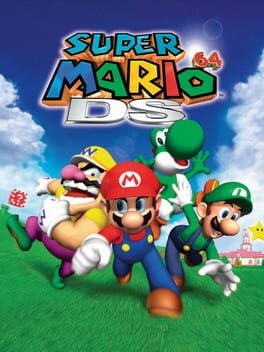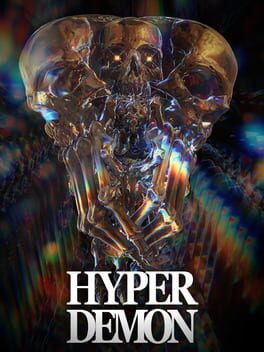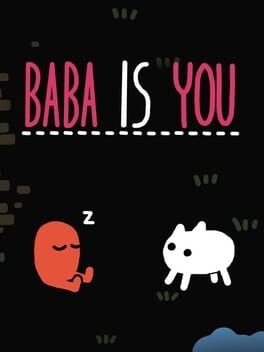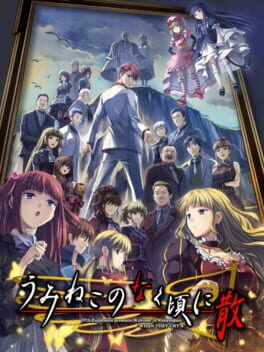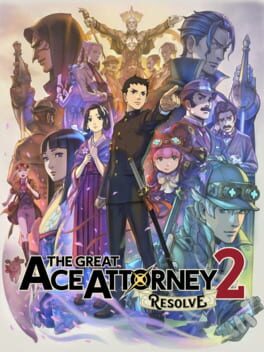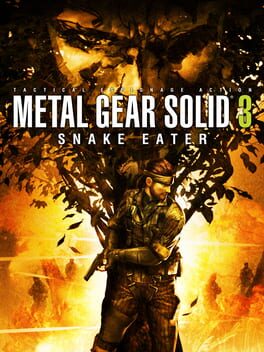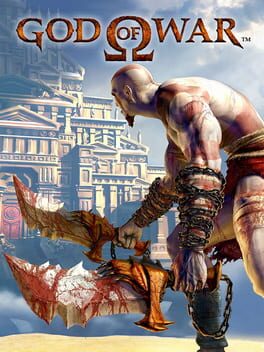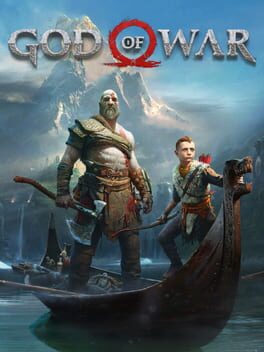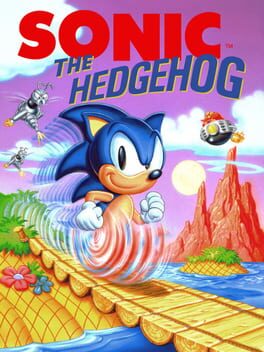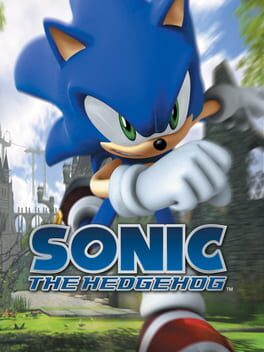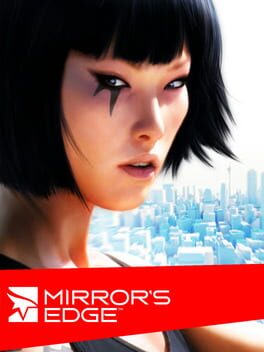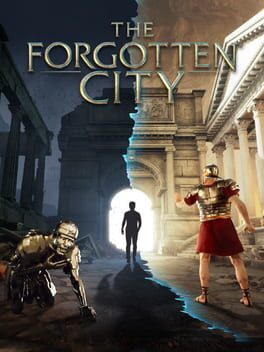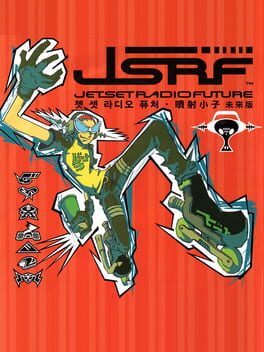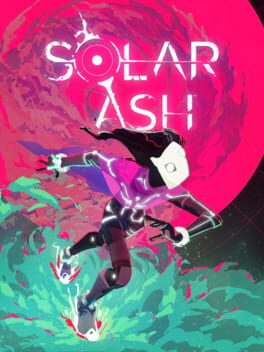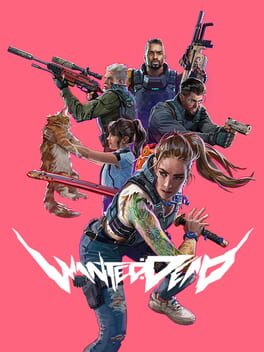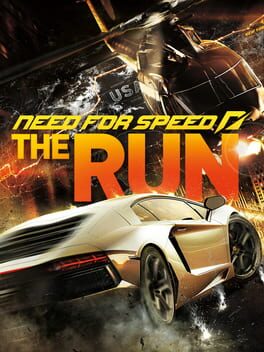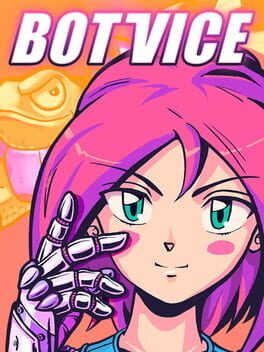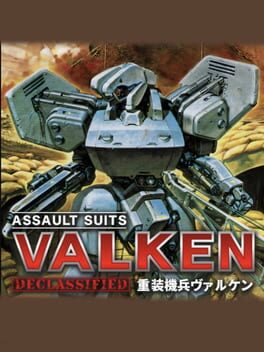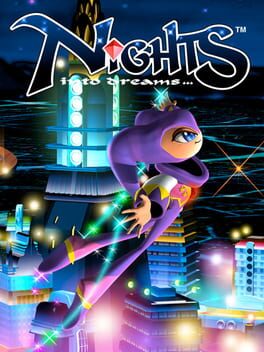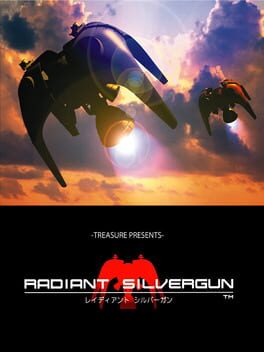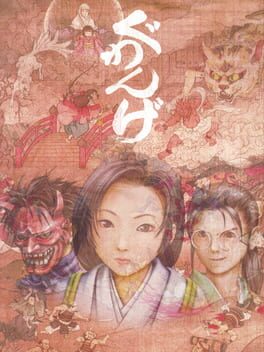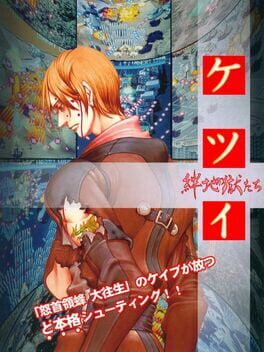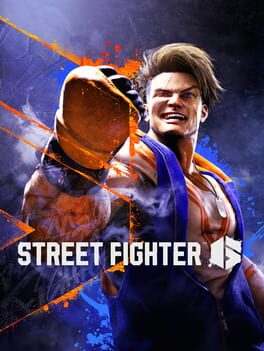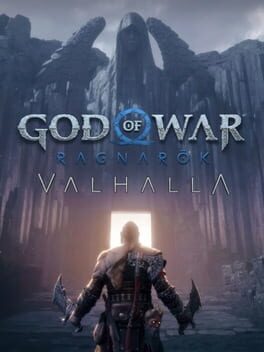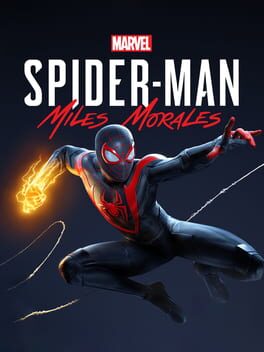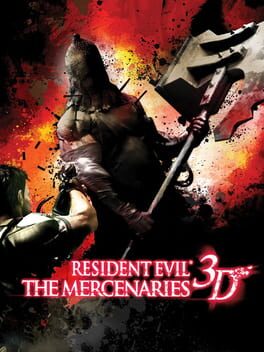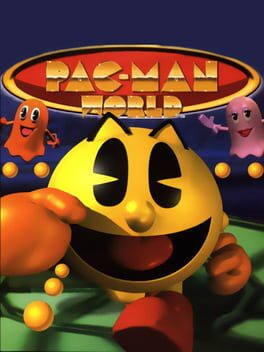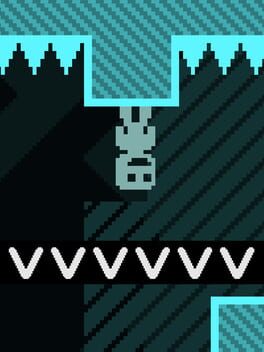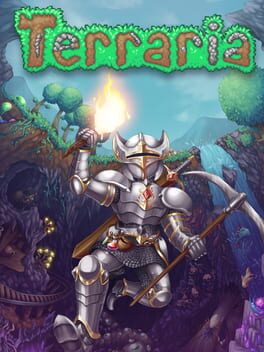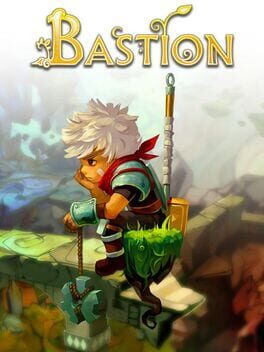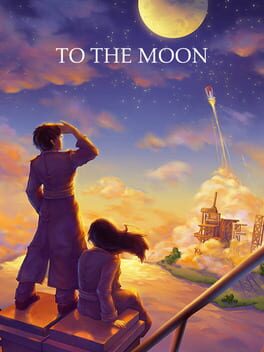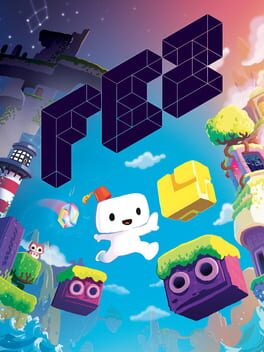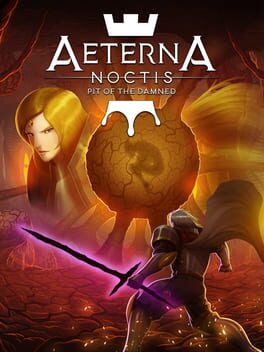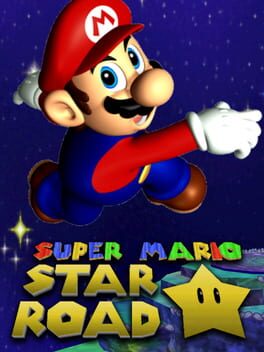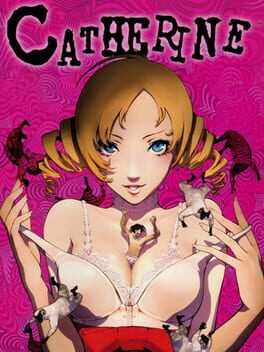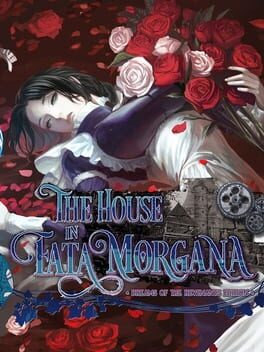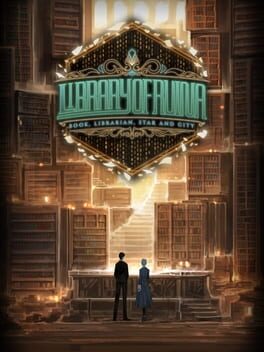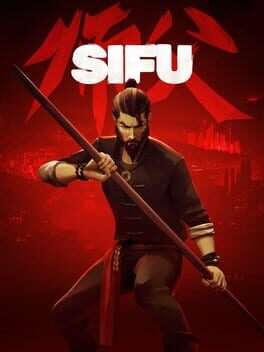ChillyRama
199 reviews liked by ChillyRama
Rain World
2017
I'll concede that I'm like, probably not even halfway through, but look at this and tell me with a straight face that this isn't the best game ever made
Everybody who thought that JRPG audiences weren't to be trusted with interesting gameplay for the first 12 hours and somehow made that the norm is going to hell forever. Oh my fucking god dude I have done two and a half dungeons and multiple MMO slop quests and have unlocked gambits and they have not deigned to give me indulgences such as "Multiple Spell Elements" or "Things For Vaan To Do Other Than Press Attack" and I can't fucking STAND it anymore
Signalis
2022
If you are sad that bloober team is going to stomp on everything that Silent Hill 2 is all about with their eventual dogshit remake than don't worry because the best silent hill game made since 3 is right here! Enjoy this game while you can before people try and tell you it’s overrated or nothing but annoying people talk about it and get you mad
After losing my save when the game came out and putting off replaying back to where i was 2 years later i am happy i finally did it. I knew i would love it, i knew it would be amazing and still it blew me away.
After losing my save when the game came out and putting off replaying back to where i was 2 years later i am happy i finally did it. I knew i would love it, i knew it would be amazing and still it blew me away.
Super Mario 64 DS
2004
nintendo salvaging the american gaming market with the release of the NES was the modern inflection point for our industry, in some ways that are less obvious than others. the console enshrined gaming as a medium with legitimacy beyond the original fad-like relevance of the atari VCS, but the centralization of this success around nintendo gave the company an uncomfortable amount of leverage. this immediately portended poorly with the simultaneous release of the console's killer app: super mario bros., which gestured to a sinister rejection of the console's original intent. look to the japanese launch line-up and you'll see arcade staples such as donkey kong and popeye; games that lauded precise, restricted play with definitive rules and short runtimes. super mario bros. was a refutation of this design philosophy in favor of the loosey-goosey variable jump heights, frequent health restoration items, and long hallways of copy-paste content replacing the tightly paced experiences that defined the era before. the NES still featured arguably the greatest console expressions of the rigorous arcade action experiences that defined the '80s - castlevania, ninja gaiden, and the early mega mans all come to mind - but the seeds super mario bros. planted would presage a shift into more and more experiences that coddled the player rather than testing their fortitude. in some ways, super mario bros. lit the match that would leave our gaming landscape in the smoldering ruins of the AAA design philosophy.
the '90s only deepened nintendo's exploration of trends that would further attempt to curb the arcade philosophy, which still floated on thanks to the valiant efforts of their competitors at sega, capcom, konami, and others. super mario world kicked off nintendo's 16-bit era with an explicitly non-linear world map that favored the illusion of charting unknown lands over the concrete reality of learning play fundamentals, and its pseudo-sequel yoshi's island would further de-emphasize actual platforming chops by giving the player a generous hover and grading them on their ability to pixel hunt for collectables rather than play well, but the most stunning example of nintendo's decadence in this era is undoubtedly donkey kong '94. the original donkey kong had four levels tightly wound around a fixed jump arc and limited ability for mario to deal with obstacles; its ostensible "remake" shat all over its legacy by infusing mario's toolkit with such ridiculous pablum such as exaggerated flip jumps, handstands, and other such acrobatics. by this point nintendo was engaging in blatant historical revisionism, turning this cornerstone of the genre into a bug-eyed circus romp, stuffed with dozens of new puzzle-centric levels that completely jettisoned any semblance of toolkit-oriented level design from the original game. and yet, this was the final fissure before the dam fully burst in 1996.
with the release of the nintendo 64 came the death knell of the industry: the analog stick. nintendo's most cunning engineers and depraved designers had cooked up a new way to hand unprecedented control to the player and tear down all obstacles standing in the way of the paternalistic head-pat of a "job well done" that came with finishing a game. with it also came this demonic interloper's physical vessel, super mario 64; the refined, sneering coalescence of all of nintendo's design tendencies up to this point. see here a game with enormous, previously unfathomable player expression, with virtually every objective solvable in myriad different ways to accommodate those who refuse to engage with the essential challenges the game offers. too lazy to even attempt some challenges at all? feel free to skip over a third of the game's "star" objectives on your way to the final boss; you can almost see the designers snickering as they copy-pasted objectives left and right, knowing that the majority of their player base would never even catch them in the act due to their zombie-like waddle to the atrociously easy finish line. even as arcade games stood proud at the apex of the early 3D era, super mario 64 pulled the ground out underneath them, leaving millions of gamers flocking to similar experiences bereft of the true game design fundamentals that had existed since the origination of the medium.
this context is long but hopefully sobering to you, the reader, likely a gamer so inoculated by the drip-feed of modern AAA slop that you likely have regarded super mario 64 as a milestone in 3D design up to now. yet, it also serves as a stark contrast to super mario 64 ds, a revelation and admission of guilt by nintendo a decade after their donkey kong remake plunged modern platformers into oblivion.
the d-pad alone is cool water against the brow of one in the throes of a desert of permissive design techniques. tightening up the input space from the shallow dazzle of an analog surface to the limitations of eight directions instantly reframes the way one looks at the open environments of the original super mario 64. sure, there's a touch screen option, but the awkward translation of a stick to the literal flat surface of the screen seems to be intentionally hobbled in order to encourage use of the d-pad. while moving in a straight line may still be simple, any sort of other action now begets a pause for reflection over the exact way one should proceed. is the sharp 45 or 90 degree turn to one side "good enough", or will I need to make a camera adjustment in-place? for this bridge, what combination of angles should I concoct in order to work through this section? the removal of analog control also forces the addition of an extra button to differentiate between running and walking, slapping the player on the wrist if they try to gently segue between the two states as in the original. the precision rewards those who aim to learn their way around the rapid shifts in speed while punishing those who hope they can squeak by with the same sloppy handling that the original game allowed.
on its own this change is crucial, but it still doesn't cure the ills of the original's permissive objective structure. however, the remake wisely adds a new character selection system that subtly injects routing fundamentals into the game's core. for starters: each of the characters has a separate moveset, and while some characters such as yoshi and luigi regrettably have the floaty hover and scuttle that I disdained in yoshi's island, it's at least balanced here by removing other key aspects of their kit such as wall jumps and punches. the addition of wario gives the game a proper "hard mode," with wario's lumbering speed and poor jump characteristics putting much-needed limiters on the game's handling. for objectives that now explicitly require wario to complete, the game is effectively barring you from abusing the superior movement of the original game by forcing you into a much more limited toolkit with rigid d-pad controls, the kind of limitations this game absolutely needed in order to shine.
that last point about objectives that specifically require a given character is key: the remake segments its objectives based on which characters are viable to use to complete them. however, while in some cases the game may telegraph which specific characters are required for a particular task, in many cases the "correct" solution is actually to bounce between the characters in real time. this is done by strategically placing hats for each of the characters throughout the map - some attached to enemies and some free-floating - which allow the player to switch on the fly. this adds new detours to the otherwise simple objectives that vastly increases their complexity: which toolkit is best suited for which part of each mission? how should my route be planned around the level to accommodate hats I need to pick up? will I be able to defeat an enemy that's guarding the hat if I had to? this decision-making fleshes out what was previously a mindless experience.
there's one additional element to this system that truly elevates it to something resembling the arcade experiences of yore. while you can enter a level as any character, entering as yoshi allows you to preemptively don the cap of any other character as you spawn in, preventing the player from having to back-track to switch characters. on the surface this seems like another ill-advised QoL feature, but some subtle features reveal something more fascinating. yoshi has no cap associated with him, so to play as him, one must enter the level with him. however, you often need to switch to another character in the middle of a level. how do you switch back? by taking damage. to solve the ridiculously overstuffed eight piece health bar of the original, this remake transforms it into a resource you expend in order to undergo transformation. sure, one could theoretically collect coins in order to replenish this resource, but this adds a new layer onto the routing that simply didn't exist in the original game, where there were so many ways to circumvent obstacles with the permissive controls that getting hit in the first place was often harder than completing the objective. by reframing the way that the player looks at their heath gauge, the game is calling to mind classic beat 'em ups, where the health gauge often doubled as a resource to expend for powerful AoE supers.
the game still suffers from much of the rotten design at the core of its forebear; these above changes are phenomenal additions, but they're grafted onto a framework that's crumbling as you delve into it. regardless, the effort is admirable. for a brief moment, nintendo offered an apology to all of those hurt by their curbstomping of the design philosophies that springboarded them into juggernaut status in the first place, and they revitalized classic design perspectives for many millions more who first entered the world of gaming after it had already been tainted by nintendo's misdeeds. the galaxy duology, released a few years after this game, attempted to rework the series from the ground up with a new appreciation for arcade design by limiting the bloated toolkit of previous games and linearizing levels, but the damage had already been done. the modern switch era has magnified nintendo's worst tendencies, putting proper execution and mechanical comprehension to the wayside as they accelerate the disturbing "the player is always right" principles that have infested their games since that original super mario bros. by looking at super mario 64 ds in this context, we at least get a glimpse of what a better world could have looked like had nintendo listened to their elders all along.
the '90s only deepened nintendo's exploration of trends that would further attempt to curb the arcade philosophy, which still floated on thanks to the valiant efforts of their competitors at sega, capcom, konami, and others. super mario world kicked off nintendo's 16-bit era with an explicitly non-linear world map that favored the illusion of charting unknown lands over the concrete reality of learning play fundamentals, and its pseudo-sequel yoshi's island would further de-emphasize actual platforming chops by giving the player a generous hover and grading them on their ability to pixel hunt for collectables rather than play well, but the most stunning example of nintendo's decadence in this era is undoubtedly donkey kong '94. the original donkey kong had four levels tightly wound around a fixed jump arc and limited ability for mario to deal with obstacles; its ostensible "remake" shat all over its legacy by infusing mario's toolkit with such ridiculous pablum such as exaggerated flip jumps, handstands, and other such acrobatics. by this point nintendo was engaging in blatant historical revisionism, turning this cornerstone of the genre into a bug-eyed circus romp, stuffed with dozens of new puzzle-centric levels that completely jettisoned any semblance of toolkit-oriented level design from the original game. and yet, this was the final fissure before the dam fully burst in 1996.
with the release of the nintendo 64 came the death knell of the industry: the analog stick. nintendo's most cunning engineers and depraved designers had cooked up a new way to hand unprecedented control to the player and tear down all obstacles standing in the way of the paternalistic head-pat of a "job well done" that came with finishing a game. with it also came this demonic interloper's physical vessel, super mario 64; the refined, sneering coalescence of all of nintendo's design tendencies up to this point. see here a game with enormous, previously unfathomable player expression, with virtually every objective solvable in myriad different ways to accommodate those who refuse to engage with the essential challenges the game offers. too lazy to even attempt some challenges at all? feel free to skip over a third of the game's "star" objectives on your way to the final boss; you can almost see the designers snickering as they copy-pasted objectives left and right, knowing that the majority of their player base would never even catch them in the act due to their zombie-like waddle to the atrociously easy finish line. even as arcade games stood proud at the apex of the early 3D era, super mario 64 pulled the ground out underneath them, leaving millions of gamers flocking to similar experiences bereft of the true game design fundamentals that had existed since the origination of the medium.
this context is long but hopefully sobering to you, the reader, likely a gamer so inoculated by the drip-feed of modern AAA slop that you likely have regarded super mario 64 as a milestone in 3D design up to now. yet, it also serves as a stark contrast to super mario 64 ds, a revelation and admission of guilt by nintendo a decade after their donkey kong remake plunged modern platformers into oblivion.
the d-pad alone is cool water against the brow of one in the throes of a desert of permissive design techniques. tightening up the input space from the shallow dazzle of an analog surface to the limitations of eight directions instantly reframes the way one looks at the open environments of the original super mario 64. sure, there's a touch screen option, but the awkward translation of a stick to the literal flat surface of the screen seems to be intentionally hobbled in order to encourage use of the d-pad. while moving in a straight line may still be simple, any sort of other action now begets a pause for reflection over the exact way one should proceed. is the sharp 45 or 90 degree turn to one side "good enough", or will I need to make a camera adjustment in-place? for this bridge, what combination of angles should I concoct in order to work through this section? the removal of analog control also forces the addition of an extra button to differentiate between running and walking, slapping the player on the wrist if they try to gently segue between the two states as in the original. the precision rewards those who aim to learn their way around the rapid shifts in speed while punishing those who hope they can squeak by with the same sloppy handling that the original game allowed.
on its own this change is crucial, but it still doesn't cure the ills of the original's permissive objective structure. however, the remake wisely adds a new character selection system that subtly injects routing fundamentals into the game's core. for starters: each of the characters has a separate moveset, and while some characters such as yoshi and luigi regrettably have the floaty hover and scuttle that I disdained in yoshi's island, it's at least balanced here by removing other key aspects of their kit such as wall jumps and punches. the addition of wario gives the game a proper "hard mode," with wario's lumbering speed and poor jump characteristics putting much-needed limiters on the game's handling. for objectives that now explicitly require wario to complete, the game is effectively barring you from abusing the superior movement of the original game by forcing you into a much more limited toolkit with rigid d-pad controls, the kind of limitations this game absolutely needed in order to shine.
that last point about objectives that specifically require a given character is key: the remake segments its objectives based on which characters are viable to use to complete them. however, while in some cases the game may telegraph which specific characters are required for a particular task, in many cases the "correct" solution is actually to bounce between the characters in real time. this is done by strategically placing hats for each of the characters throughout the map - some attached to enemies and some free-floating - which allow the player to switch on the fly. this adds new detours to the otherwise simple objectives that vastly increases their complexity: which toolkit is best suited for which part of each mission? how should my route be planned around the level to accommodate hats I need to pick up? will I be able to defeat an enemy that's guarding the hat if I had to? this decision-making fleshes out what was previously a mindless experience.
there's one additional element to this system that truly elevates it to something resembling the arcade experiences of yore. while you can enter a level as any character, entering as yoshi allows you to preemptively don the cap of any other character as you spawn in, preventing the player from having to back-track to switch characters. on the surface this seems like another ill-advised QoL feature, but some subtle features reveal something more fascinating. yoshi has no cap associated with him, so to play as him, one must enter the level with him. however, you often need to switch to another character in the middle of a level. how do you switch back? by taking damage. to solve the ridiculously overstuffed eight piece health bar of the original, this remake transforms it into a resource you expend in order to undergo transformation. sure, one could theoretically collect coins in order to replenish this resource, but this adds a new layer onto the routing that simply didn't exist in the original game, where there were so many ways to circumvent obstacles with the permissive controls that getting hit in the first place was often harder than completing the objective. by reframing the way that the player looks at their heath gauge, the game is calling to mind classic beat 'em ups, where the health gauge often doubled as a resource to expend for powerful AoE supers.
the game still suffers from much of the rotten design at the core of its forebear; these above changes are phenomenal additions, but they're grafted onto a framework that's crumbling as you delve into it. regardless, the effort is admirable. for a brief moment, nintendo offered an apology to all of those hurt by their curbstomping of the design philosophies that springboarded them into juggernaut status in the first place, and they revitalized classic design perspectives for many millions more who first entered the world of gaming after it had already been tainted by nintendo's misdeeds. the galaxy duology, released a few years after this game, attempted to rework the series from the ground up with a new appreciation for arcade design by limiting the bloated toolkit of previous games and linearizing levels, but the damage had already been done. the modern switch era has magnified nintendo's worst tendencies, putting proper execution and mechanical comprehension to the wayside as they accelerate the disturbing "the player is always right" principles that have infested their games since that original super mario bros. by looking at super mario 64 ds in this context, we at least get a glimpse of what a better world could have looked like had nintendo listened to their elders all along.
Hyper Demon
2022
Not a single element in Hyper Demon exists without a reason. And every mechanic and player input serves multiple purposes. Every action you take is part of an intricately designed network of decisions that at the same time feels limitless and can comfortably fit in your head.
I honestly, genuinely don't know how they did it. All I know is I've spent 30 hours playing a game that can be finished in under 4 minutes and I don't plan to stop anytime soon. It's some of the best first person shooting action I've ever experienced.
Beware of the lengthy tutorial. You can jump into the game without fully finishing it, but should at some point go back to it to grasp some of the more nuanced mechanics.
I honestly, genuinely don't know how they did it. All I know is I've spent 30 hours playing a game that can be finished in under 4 minutes and I don't plan to stop anytime soon. It's some of the best first person shooting action I've ever experienced.
Beware of the lengthy tutorial. You can jump into the game without fully finishing it, but should at some point go back to it to grasp some of the more nuanced mechanics.
Sonic Mania is easily one of my all time favorite platformers and I was left anticipating what the team would do next. What they ended up doing was not another sonic game, but a unique take on 3D platformers.
Penny's Big Breakaway offers unique controls that allow you to redirect momentum in interesting ways. This is all done with yo-yo throw on right stick, jump on bumper, and ride on trigger which is the smoothest way to play. It takes some practice to get used to, but the flexibility of it is impressive. The tools you have for this are a wall jump, a horizontal dash that also can be used in the air, you can hold the yo-yo in place to either bounce off it like cappy in Odyssey or in the air to swing, a double jump that doesnt gain height but allows you to control your arc, and the ability to ride the yo-yo across the ground. What makes these tools cool is how they can be chained together in combos and interact with one another, especially due to the momentum physics in place. One of the ways this works is that your vertical and horizontal velocity can be transfered into the ride to get yourself rolling faster, much like classic sonic in that regard. This also interacts with swinging in how falling from a greater height can let you have more momentum to work with for your swing and your swing can be angled in many ways to either get yourself to the ground faster to go into a ride or gain height to reach a platform. A great way to gain height if on the ground is to bounce off the yo-yo, wall jump, bounce, and wall jump which can allow for some interesting routes and skips.
The level design is fantastic at fascilitating a playground to work with for these mechanics. It takes a page out of Sonic in how it has some minor alternate routes you can use to navigate the level. There is a lot of neat opportunities to utilize the physics for skips and getting around quickly with lots of slopes to work with along with alterations in platform heights. It's addicting to play in time attack and try different routes and strategies to shave time. It's such a testament to the talent of Evening Star that I am continuing to grind time into it long after finishing it.
As fantastic as it is to play, there is some jank to it. Collision as of launch is a bit finnicky on some walls and objects, but nothing that can't be fixed in a patch. Time attack missing an instant restart button like in Sonic Mania is sorely missed as well. Boss fights are pretty whatever. The dilema system could probably have been dropped and just kept the showpiece collectables. Regardless of all that, this is such an impressive new IP from Evening Star and easily one of the best 3D platformers I have played as it leans into the thing I love most about the genre being fun movement with a lot of expression.
update
Adding a fast restart and not having the timer start before leaving the start pad genuinely made me grind time trials more. This is the most engrossed I have been in a 3D platformer since Spark the Electric Jester 3.
Penny's Big Breakaway offers unique controls that allow you to redirect momentum in interesting ways. This is all done with yo-yo throw on right stick, jump on bumper, and ride on trigger which is the smoothest way to play. It takes some practice to get used to, but the flexibility of it is impressive. The tools you have for this are a wall jump, a horizontal dash that also can be used in the air, you can hold the yo-yo in place to either bounce off it like cappy in Odyssey or in the air to swing, a double jump that doesnt gain height but allows you to control your arc, and the ability to ride the yo-yo across the ground. What makes these tools cool is how they can be chained together in combos and interact with one another, especially due to the momentum physics in place. One of the ways this works is that your vertical and horizontal velocity can be transfered into the ride to get yourself rolling faster, much like classic sonic in that regard. This also interacts with swinging in how falling from a greater height can let you have more momentum to work with for your swing and your swing can be angled in many ways to either get yourself to the ground faster to go into a ride or gain height to reach a platform. A great way to gain height if on the ground is to bounce off the yo-yo, wall jump, bounce, and wall jump which can allow for some interesting routes and skips.
The level design is fantastic at fascilitating a playground to work with for these mechanics. It takes a page out of Sonic in how it has some minor alternate routes you can use to navigate the level. There is a lot of neat opportunities to utilize the physics for skips and getting around quickly with lots of slopes to work with along with alterations in platform heights. It's addicting to play in time attack and try different routes and strategies to shave time. It's such a testament to the talent of Evening Star that I am continuing to grind time into it long after finishing it.
As fantastic as it is to play, there is some jank to it. Collision as of launch is a bit finnicky on some walls and objects, but nothing that can't be fixed in a patch. Time attack missing an instant restart button like in Sonic Mania is sorely missed as well. Boss fights are pretty whatever. The dilema system could probably have been dropped and just kept the showpiece collectables. Regardless of all that, this is such an impressive new IP from Evening Star and easily one of the best 3D platformers I have played as it leans into the thing I love most about the genre being fun movement with a lot of expression.
update
Adding a fast restart and not having the timer start before leaving the start pad genuinely made me grind time trials more. This is the most engrossed I have been in a 3D platformer since Spark the Electric Jester 3.
Baba is You
2019
for a game with a very obvious gimmick (push around blocks that constitute the high-level logic of the world) it really pulls no punches when it comes to actual level layouts. there are only so many stages where you make the walls intangible or control them yourself that really seem novel, and the game never rests on its laurels when it comes to utilizing cheap heat like this in the stages. every potential trick or shortcut or simple solution you could think of for a level has been ruthlessly excised thanks to the strict sokoban layout the game adheres to, and the potential for unforseen failure from accidentally pushing the "you" block out of the way or trapping a block in an unmovable spot or destroying an important object far outstrips any cute logic shenanigans in magnitude.
by the same token, the solutions themselves require a level of elasticity that I rarely encounter in puzzle games that makes successfully concocting a solution all the more rewarding. navigating both the explicit on-screen rules and the implicit requirements of the layout requires stacking so many disparate elements in your brain and jamming them together until everything finally aligns and you finally forsee the correct order of events to move forward. this gets even more complicated as the game moves into multiple moving characters at once, teleportation, the elusive empty and all blocks, and faux gravity. a good 70% of the game is totally optional, and it revels in that it can contort the premise so completely and utterly just as long as the average player can make it through enough levels to unlock the finale. I managed to complete 70 flat before tackling the finale and it felt like a worthwhile exploration of so many different mechanics and ideas, even if I couldn't approach many of the really brain-bending challenges.
if anything, the only real umbrage I can take with the design is how the lack of dialog or tutorialization makes certain game mechanics opaque. it doesn't really come down to a need for explanations per se, but rather that occasionally confusing mechanics are introduced without puzzles that illustrate exactly what makes them tick, which is an issue in a game where every facet and knock-on effect of a given logical construct will be needed at some point or another to solve a puzzle. if I stumble through the intro puzzle for a world, there's a good chance I'm going to struggle to apply my knowledge of it meaningfully when its required. still, the game encourages experimentation with its built-in rewind option that you'll struggle to find many instances where progress is truly detered as long as you're aptly trying every tool at your disposal.
by the same token, the solutions themselves require a level of elasticity that I rarely encounter in puzzle games that makes successfully concocting a solution all the more rewarding. navigating both the explicit on-screen rules and the implicit requirements of the layout requires stacking so many disparate elements in your brain and jamming them together until everything finally aligns and you finally forsee the correct order of events to move forward. this gets even more complicated as the game moves into multiple moving characters at once, teleportation, the elusive empty and all blocks, and faux gravity. a good 70% of the game is totally optional, and it revels in that it can contort the premise so completely and utterly just as long as the average player can make it through enough levels to unlock the finale. I managed to complete 70 flat before tackling the finale and it felt like a worthwhile exploration of so many different mechanics and ideas, even if I couldn't approach many of the really brain-bending challenges.
if anything, the only real umbrage I can take with the design is how the lack of dialog or tutorialization makes certain game mechanics opaque. it doesn't really come down to a need for explanations per se, but rather that occasionally confusing mechanics are introduced without puzzles that illustrate exactly what makes them tick, which is an issue in a game where every facet and knock-on effect of a given logical construct will be needed at some point or another to solve a puzzle. if I stumble through the intro puzzle for a world, there's a good chance I'm going to struggle to apply my knowledge of it meaningfully when its required. still, the game encourages experimentation with its built-in rewind option that you'll struggle to find many instances where progress is truly detered as long as you're aptly trying every tool at your disposal.
Hades
2018
Not even the term "roguelite" feels appropriate anymore. I'd say Hades is closer to a roguelite-lite, because now the meta-progression is the main event and the actual randomized dungeon crawl more of an afterthought. In hindsight, I'm surprised it's taken Supergiant, who historically develop games for the sole purpose of padding out a seemingly pre-written script, this long to make this game, since they're now given infinitely more nooks and crannies to cram situational dialog into. Critiquing it as a roguelike wouldn't be fair; it's not even trying to deliver a fulfilling, high skill-ceiling experience that hinges on the player's ability to take advantage of good luck and creatively adapt to overcome misfortune. It's addicting, yes, but for all the wrong reasons- instead of embracing the arcade philosophy of only giving players enough motivation to break through to the next level on their own, it buries its gameplay shortcomings under a mountain of extrinsic reward. It's specifically designed to be too hard with no upgrades and too easy with upgrades, in an effort to dripfeed the player story details in a way that appears natural. Though, it seems like this approach requires a substantial amount of willful ignorance to actually be effective. For me, at least, finally beating Hades (the guy) felt like less of a monumental accomplishment and more of an item on a checklist that I'd crossed off before being carted away to the next stop on the assembly line, which nullifies any potential benefit of the roguelike structure. That's not to say the concept is broken at its core, and it's hard to deny the appeal of the dynamic hubworld and the overall level of contextualization given to a traditionally abstract genre. I can certainly imagine falling in love with this game if it really did feel like all the dialog corresponded 1:1 with your actions, but I'm skeptical that this accurately describes every fan of Hades. Not to pluck my own lyre, but NPCs consistently felt behind the times for me, still praising me for reaching Elysium after I'd already escaped the Underworld several times, for instance. And it's not like the writing is exactly stellar- Zagreus's near constant quipping tells me that Supergiant's not fully confident in a tone that's more comedic than their previous games. But then again, this is all stuff that, in my eyes, would only serve to elevate an already good game and not to excuse combat that's fundamentally a slog. I don't think I have a single compliment for Hades's action gameplay, but despite runs that always feel the exact same, upgrades that are all roundabout stat modifiers with no room for personality, and non-boss enemies that never pose a threat, what's most offensive to me is that Supergiant hasn't at all evolved since Bastion. It's the same weightless, uninspired, utterly boring mashfest that it's been for the past decade, entirely inexcusable. Or maybe my heart only has enough room for one randomized trek through the realm of the undead.
13 lists liked by ChillyRama
by chump |
250 Games
by FallenGrace |
117 Games
by Drax |
20 Games
by JohnHarrelson |
10 Games
by Reyn |
11 Games
by SlayerSaint |
37 Games
by MrGreM |
24 Games
by Bowsori |
68 Games
by Yeahlookiehere |
30 Games




